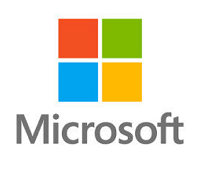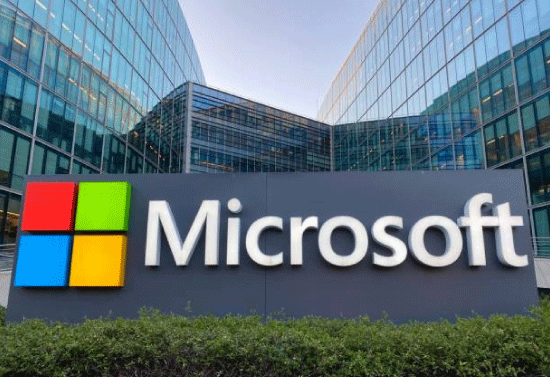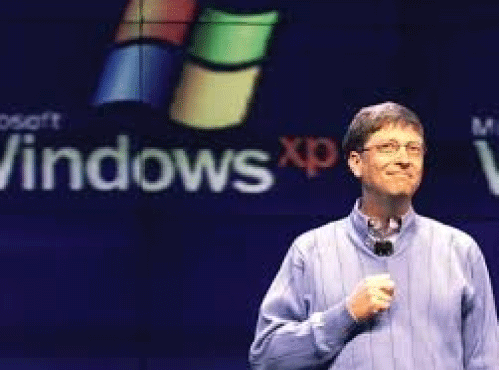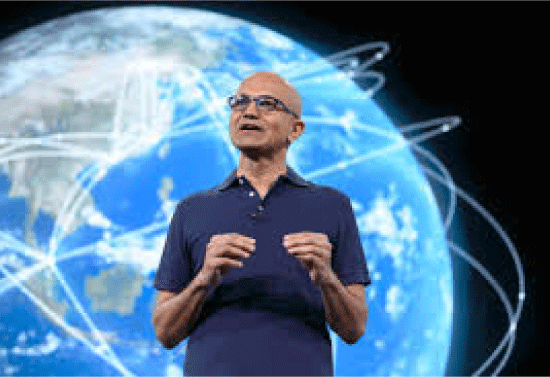Microsoft Company
Microsoft Corporation, which is famously known as Microsoft in short, is an American MNC (Multi-National Company) as well as Multinational Technology Corporation which produces personal computers, consumer electronics, computer software, and all related services. The best-known software products of Microsoft Corporation are the Internet Explorer & Edge Web browsers, the Microsoft Office Suite (all Office-related applications provided by Microsoft like word, Excel, and others), and the Microsoft Windows line of operating systems. The flagship and most popular hardware products of the company are the Microsoft Surface lineup of touchscreen personal computers and the Xbox line-up of video game consoles. Along with Meta, Apple, Amazon, and Google, Microsoft Corporation is also one of the Big Five American information technology companies as per the latest data of 2021. In the Fortune 500 rankings of the largest United States corporations, Microsoft Corporation was ranked 21st in 2020 in terms of total revenue generated by the company. Microsoft Corporation: IntroductionTo develop and sell BASIC interpreters for the Altair 8800, Paul Allen and Bill Gates together founded Microsoft Corporation startup (The Word "Microsoft" itself is a portmanteau of "microcomputer software") on April 4, 1975 as a joint venture between both partners. In the mid-1980s, the development of BASIC interpreters caused the rose of the company to dominate the market of the operating system for personal computers with MS-DOS (a type of Operating System produced by Microsoft Operation). This domination of the company in the market of the operating systems for personal computers later continued with the introduction of Microsoft Windows by the company. The IPO (Initial Public Offering) of the company came in the year 1986, and subsequently, there was a huge rise in the Market Price of the shares of the company. This IPO and subsequent rise in the share price created more than 12,000 millionaires and three billionaires among Microsoft Employees. The company has made several corporate acquisitions since the beginning of the 1990s decade, and it has increasingly diversified from the operating system market. The largest acquisition by Microsoft Corporation was the LinkedIn acquisition by the company for more than USD 26 Billion in December 2016. Followed by their largest acquisition, the second-largest acquisition of the company is the acquisition of Skype Technologies by Microsoft Corporation in May 2011, for USD 8.5 Billion. In the office software suite and IBM PC compatible operating system market, Microsoft Corporation emerged as the market dominator as of 2015. There is a wide range of many other types of enterprise and consumer software produced by the company for servers, gadgets, tabs, laptops, and desktops. These other types of products produced by the company have a long list, and it includes the following products:
Bill Gates was replaced from the position of CEO (Chief Executive Officer) in Microsoft Corporation by Steve Ballmer in the year 2000, and he later envisioned a "devices and services" strategy as well. The "devices and services" strategy of the Microsoft Corporation unfolded with the acquisition of Dange Inc by the company in the year 2008, and this acquisition led to the entering of the company first time into the personal computer production market in June 2012. The company launched the Microsoft Surface, which is a line of tablet computers, and with the launch of these tablets, the company was entering the personal computer production market for the first time. In the upcoming years, the company entered the smartphone market by acquiring Nokia's devices and services division, and launch of Microsoft Mobiles in the year 2012. Satya Nadella took over as the CEO position of the Microsoft Corporation in 2014, and since then, the development and production strategy of the company changed & it again started focusing on hardware and has instead focused on cloud computing. This was a big as well as successful move in the company which helped the company's share to reach its highest value since December 1999. Microsoft Corporation: HistoryFoundation Years: 1972-85Using their computer programming skills, two childhood friends (Paul Allen and Bill Gates) sought to make a business. They jointly founded Traf-O-Data in 1972, and using this company, they both were able to sell a rudimentary computer that was used to analyze and track automobile traffic data. This became the first computer that was sold by both partners. After this, Allen enrolled at Washington State University to pursue a degree in computer science whereas Bill Gates enrolled at Harvard University for pursuing higher studies. Among both partners, Allen was the first one who dropped out of college to work at Honeywell. Later, Bill Gates also dropped out of Harvard University to focus completely on their business. Altair 8000, which was a type of microcomputer developed by Micro Instrumentation and Telemetry Systems' (MITS), was published in the January 1975 issue of Popular Electronics, and this issue inspired Allen to develop a BASIC interpreter for the device. To develop the interpreter as they planned, Allen and Gates distributed their work, and according to the division of work, Gates started developing an interpreter while Allen was working on a simulator for the Altair. They both started working on Allen's plan, and when finally, they both were able to develop the interpreter, Gate called MITS and claimed that he had a working interpreter. In reply to this claim, MITS asked for a demonstration of the Interpreter, and when both demonstrated the interpreter to the MITS in March 1975, it worked flawlessly which impressed the company. MITS was very impressed when it saw the working of the interpreter developed by Allen & Gate, and it also decided that it would distribute this BASIC interpreter and market it as Altair BASIC. After this success, On April 4th, 1975, Gates and Allen together established Microsoft Allen suggested the name "Micro-Soft", which was the short name for micro-computer software, and Gates as CEO of the startup. The first international office of the company was opened in August 1977 under the name ASCII Microsoft, and it was opened only after the company made an agreement with ASCII Magazine in Japan. With further developments in the company, in January 1979, the company moved its headquarter to Bellevue, Washington, USA. With its version of Unix (known as Xenix), the company entered into the business of OS (Operating System) development in 1980. Even though the company entered the OS development business through its Xenix OS, it was only MS-DOS (shortened for Microsoft Desktop Operating System) that solidified the position of the company in the OS market. To fulfill this contract with IBM, Microsoft purchased 86-DOS from Seattle Computer Products, which was a CP/M clone, and branded it as MSDOS to sell it to IBM. Although, IBM rebranded the OS provided by Microsoft Corporation to IBM PC DOS to use it in the IBM Personal Computer (IBM PC). 
Following this deal with IBM, Microsoft became the leading PC operating systems vendor in the market. With the release of the Microsoft House in 1983, the company started to expand into new sectors of the market, and it also started to sell it through a publishing division named Microsoft Press. In the same year when the company started expanding its presence in the market, Paul Allen developed Hodgkin's disease and because of this, he also resigned from the company. This was the news that was circulated in the market when Paul Allen exited the company but, in his autobiography, Idea Man: A Memoir by the Co-founder of Microsoft, he revealed something different from what was circulated in the market at that time. Following his exit from Microsoft, Paul Allen later started investing in private space flights, neuroscience, commercial real estate, sports teams, low-tech sectors, and more. Development of Windows and Office: 1985-1994It was 1986 only when the company moved its headquarter from Bellevue to Redmond, Washington. Microsoft became a public limited company in the same year when it shifted its headquarter. After going public in 1986, the stock of the company made a huge rise which ultimately resulted in 12,000 millionaires and 4 billionaire created among company's employees. Because of possible collusion due to the partnership with IBM, Microsoft corporation was examined by the Federal Trade Commission in 1990 after several complaints registered against the company. This examination and collusion of the Federal Trade Commission with Microsoft Corporation marked the beginning of more than a decade of legal clashes of the company with the government. Microsoft's Window NT, which was heavily based on their copy of the OS/2 code, was the prime focus of the company during this clash time with the government so that company won't lose its customer base from the OS market. This model of the windows was finally shipped on July 21st, 1993, and it came with a new modular. The Windows NT had the 32-bit Win32 application programming interface (API), and a new modular Kernel. Both of these features of the new Windows OS, it become easier to port from 16-bit (MS-DOS-based) Windows from one system to another system without any hustle. The OS/2 partnership between IBM and Microsoft deteriorated on the very same day when Microsoft informed IBM of Windows NT. Microsoft Office Suite, which was a bundled application for different types of separate applications of Microsoft such as Microsoft Word, Microsoft Excel, and many more, was introduced by the company in the market in 1990. In the same year as introducing Microsoft Office Suite in the market, Microsoft also launched Windows 3.0 on May 22. The Windows 3.0 version from Microsoft had improved protected mode capability for the Intel 386 processor and featured streamlined user interface graphics which made it more interactive to use this Intel processor under the window segment. Launched in the same year, Both Windows 3.0 & Microsoft Office Suite dominated the market in their respective sectors. An OME has to pay a royalty amount for each computer sold by it according to this pre-processor license, and the conditions in this license agreement also stated that whether the OEM sells the computer with a Microsoft operating system or a non-Microsoft operating system, the royalty amount on the sale of each computer is mandatory. When an OME sells computers in which no Microsoft product is being used, this royalty amount act more like a penalty, or some kind of tax on OMEs using competitive Operating System in their PCs. In the statement filed in the court, it was also observed that Microsoft's use of per processor licenses has increased significantly since 1988. Windows 95, Windows XP, Foray into the Web, and Xbox: 1995-2007Microsoft Corporation started to expand its product line and redefined its product offerings into different product lines such as the world wide web (WWW), and computer networking, after it started following Bill Gates' internal "Internet Tidal Wave memo" on May 26th, 1995. Microsoft was the only established and major company that planned fast enough to be a part of WWW practically from the early beginning of the World Wide Web (With a few exceptions of new companies, like Netscape, and many others), and this fast planning and action of the company gave it an edge over other major and established companies, like Borland, WordPerfect, Novell, IBM, and Lotus, which were being much slower to adapt to the new situation and dominate the market for upcoming years. Windows 95 was the latest OS in the company's product list that was released by the company on August 24th, 1995, and this newly launched windows featured 32-bit compatibility; similar to NT, it provided the Win32 API, a completely new user interface with a novel start button, pre-emptive multitasking, and many other new & exciting features. Many online services MSN came bundled with this latest edition of Windows, and these online services were first intended to be a competitor to Internet Explorer (a Web browser), and Internet (for OMEs) and it was planned that with a new competitor, the company would able to attract more customers. 
Because the boxes were printed before the team finished the Web browser, the Internet Explorer has not bundled with the retail Windows 95 boxes (like in online MSN services), and instead, it was included in the Windows 95 Plus! pack. Windows 95 quickly became a major success for the company because it was Backed by a high-profile marketing campaign. Even, The New York Times also wrote about windows 95 and called this OS of the company the most expensive, most frenzied, and splashiest introduction of a computer product in the industry's history. Windows CE 1.0, which was a new OS designed by Microsoft corporation & it was developed for devices with low memory and other low end features, was released in the market in the year 1996. Microsoft Corporation was asked to stop bundling its Internet Explorer browser with Windows OS in October 1997 because the Justice Department filed a motion in the Federal District Court, stating that Microsoft violated an agreement signed in 1994. Steve Ballmer, who was an employee of the company since 1980 and also a good friend of Bill Gates in his school days, was handed over the position of CEO of the company by Gates. While handing over the position of the company's CEO to Steve Ballmer, Bill Gates created a position for himself in the company, i.e., Chief Software Architect. To protect the intellectual property of the company, and increase its security through identifying changes in both software and hardware, Microsoft Corporation along with many other established companies formed the Trusted Computing Platform Alliance in October 1999. In the case of the United States government versus Microsoft Corporation, a judgment was drawn on April 3rd, 2000, and in this judgment, Microsoft Corporation was called an "abusive monopoly" company, but later in the upcoming years (2004 to be exact), the company settled down with the United States Department of Justice for this judgment. In between this settlement, the company successfully launched Windows XP (the newest OS on its product list) with an aim to unify the NT lines and mainstream OS under the NT codebase. An Antitrust Legal Action, which cited that Microsoft Corporation was abusing its dominance with the Windows OS, was brought by the European Union against the company in March 2004. This Antitrust Legal Action against the company resulted that the company being forced to develop & release new versions of Windows XP without Windows Media Player (that came with the name: Windows XP Professional N, and Windows XP Home Edition N), and pay a fine of Euro 497 million or USD 613 million. In the later part of 2004, the company also released Xbox, and with the launch of it, the company was also able to successfully enter the video game console market which was dominated by Nintendo and Sony at that time. In the very next year, the Xbox 360, which was the second edition of the video game console from Microsoft Corporation, was released in two different versions. Following is the name of two different versions of Xbox 360 with their listed price that was released by the company in 2005:
Windows Vista, Windows 2007, Windows 8, Xbox One, Microsoft Azure, Surface Devices, and Microsoft Stores: 2007-14Microsoft's Windows Vista, which was released in early 2007, was developed to enhance features, and security in the company's produced operating systems, and a redesigned user interface dubbed Aero was introduced in this version of Windows. With the release of Windows Vista, Microsoft Office 2007 was also released, and this latest version of Office Suite featured a "Ribbion" User Interface. This type of User Interface was even more significant at that time because this UI in the Microsoft Office 2007 marked a significant departure from its predecessors. Microsoft Corporation was charged with another hefty fine of Euro 899 million or USD 1500 million by the European Union on February 27th, 2008, because of its non-compliance with the March 2004 judgment. While imposing this huge amount of fine on the company, a statement was also released by the European Union stating that the company charged rivals unreasonable prices for key information about its back-office servers and workgroups. A big decision was announced by the company in 2006 that Bill Gates would soon retire from his position as Chief Software Architect in the company, and finally, on June 27th, 2008, Bill Gates announced his retirement from his role but he retained his other positions in the major projects of the company. The company entered the cloud computing markets for Windows on October 27th, 2008, with the launch of Azure Services Platform, the company's cloud computing platform. Soon, the company also announced that it is planning to open a chain of Microsoft-branded retail stores, and working on this plan, Microsoft Corporation launched its first retail store on October 22nd, 2009 in Scottsdale, Arizona. On the very same day when the company opened its first Microsoft Retail store, Windows 7 was also released to the public. Following are some key focus areas of Microsoft with the launch of Windows 7:
The company was struggling to keep up with its rivals in providing a modern smartphone operating system in the booming smartphone industry of the late 2000s, and this struggle of the company resulted that it started lagging behind Google-sponsored Android and Apple in the United States' smartphone operating system market. To grow more in the smartphone operating system market, the company took many big steps, like introducing a new Windows Phone OS that was released in October of that year, and revamping the production of their aging flagship mobile operating system, Windows Mobile. Microsoft formed an alliance with Nokia in 2011 and implemented a new strategy to make its presence stronger in the smartphone OS market. According to this strategy of the company, Microsoft would provide a consistent user experience across all smartphones that are based on the Windows Phone OS and launched after the release of this OS. Microsoft Corporation along with Deutsche Telekom, Verizon Communications, Yahoo!, HP Networking, Google, and 17 other companies, founded an Open Networking Foundation, which started its operations on March 23rd, 2011. In June 2011, Microsoft unveiled Windows 8, its latest addition to operating systems developed by the company, in Taipei, and this OS from the company was designed to power both personal computers and tablet computers. The developer preview of Windows 8 was released on September 13th by the company, which was followed by the release of the customer preview on February 29th, 2012, and finally, the market or public version of this operating system was released in May 2012. In the very next month, the company also launched the Surface device, which became the first computer in the history of computers to have its hardware built by Microsoft Corporation. In the same month, the company also bought Yammer, a social network, and launched Outlook in the very next, which was designed to compete with Google's Gmail. The outlook mail service was designed by the company with more focus on maintaining the data security and privacy of its customers. Microsoft released Xbox One (the newest addition in its video game console series) in 2013, and it was a rebranded & upgraded version of Kinect. Note: Kinetic was a type of video game controller, and motion-sensing input device, which was completely developed by Microsoft and first introduced in the market in November 2010.Microsoft Edge, Windows 10, and HoloLens: 2014-20
Satlla, who previously led Microsoft's Cloud and Enterprise division, became the CEO of Microsoft Corporation on February 4th, 2014, when Steve Ballmer stepped down from the position of CEO of the company. On the very same day when Satya Nadella became the CEO of the company, John W Thompson became the next chairman of the company; the position which was previously held by Bill Gates. Even after that, Bill Gates continued to participate in all major & important affairs of the company as a technology advisor of the company. John W Thompson was the second person to become chairman in the history of Microsoft Corporation, and he is continuing as the chairman of the company. Nokia Devices and services were acquired by Microsoft Corporation on April 25th, 2014, for USD 2500 million. The next edition of the windows, Windows 10, was released by Microsoft on July 29th, 2015, and it was released along with its server sibling. In the same year, the announcement of the scheduled release of Microsoft Surface Hub, its first interactive whiteboard, was made by the company on January 21st, 2015. In the very next year, in September 2016, Windows Server 2016 was also released. Microsoft Corporation, with the sale of more than 8 million smartphones, was the largest smartphone maker in the US smartphone industry, as per the data of the first quarter of 2015. At the same time, Microsoft also released the newest browser, Microsoft Edge, in the market, and this release was a huge event for the IT sector companies. Microsoft also made many other huge announcements as well as big releases during the same time, such as the release of HaloLens, Updated versions of Windows 10, Edge enhancement version, and many others. Microsoft Corporation: Product ListsIn today's time, Microsoft is one of the biggest IT companies in the world, and it is still expanding into many other sectors related to IT directly or indirectly. From the early beginning, the core focus of the company was to develop operating systems for computers, and it is still its primary business. But other than developing Operating systems for Computers and PCs, Microsoft offers a wide range of products under its brand name or under the name of its subsidiaries. These products make the presence of the company stronger in various sectors of the market. Following is the list of products offered by Microsoft with their category: (1) Operating SystemsDeveloping and selling operating systems is the primary business. Early, the company was only limited to the development of Computer & PCs operating systems, but in the past one or two decades, it has also started developing an operating system for smartphones as well. The smartphone's operating system by Microsoft is not as popular as its computer operating system, but these smartphone OS were very popular in their early days. Following is the complete list of operating systems that were developed or sold under the brand name Microsoft Corporation: (a) Computer Operating Systems:
(b) Smartphone Operating Systems:
(2) Office SuiteOther than developing Operating Systems, Office Suite was the most popular business of the company. Under their Microsoft Office Suite, the company offers various applications that are useful for office as well as all other professionals and educational work. Following is the list of applications offered as bundled by the company under the Microsoft Office Suite:
Along with the release of the latest version of Windows, the latest version bundled with Microsoft Office Suite applications is being released by the company. (3) Web browsersFollowing is the list of web browsers released by the company under the name of Microsoft Corporation:
(4) Gaming ConsolesFollowing is the list of video game consoles developed and released by the company:
Apart from all these products, there are many other products from different sectors that are offered by Microsoft to its customers.
Next TopicCaterpillar Company
|
 For Videos Join Our Youtube Channel: Join Now
For Videos Join Our Youtube Channel: Join Now
Feedback
- Send your Feedback to [email protected]
Help Others, Please Share










